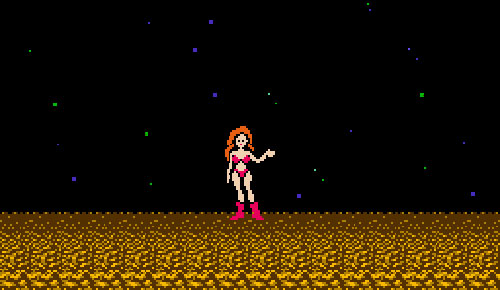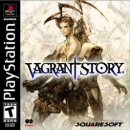
Minecraft has become an internet phenomenon. It has made quite a bit of money, and generated its fair share of buzz. And you know who comes running at the scent of greenbacks… Sean Malstrom recently weighed in on the popularity and addictiveness of Notch’s dreamland:
Quote:
I haven’t seen a game this engrossing in a long time. It’s budding phenomenon on PCs reminds me of a certain game in the eighties. Like Minecraft, that game from the eighties was very ‘blocky’, was made by one eccentric bearded engineer, was graphically behind gaming by decades, yet it took over the world. Imposters! Step aside! This is the heir to the Tetris phenomenon.
I’m going to have to stop you there, Sean. Minecraft is about as far away from Tetris as you can get. Tetris’ draw was a short and simple ruleset for a spatial reasoning puzzle with linearly increasing difficulty spiced by a dash of Russian exoticism from its origins and aesthetics. Tetris’ mechanics are direct interactions with binary data—a Tetris well is literally filled with ones and zeroes. Matrix translations and rotations are triggered by timers and microswitches. Its legacy will be closer to that of Chess than Mario, Zelda, or even Minecraft.
Minecraft, however, is a complex and deep simulation game. From the procedural environment, to the liquid physics, to the crafting tech-tree, to the redstone switches, Minecraft is a game dense with interactions between complex rulesets. To compare something like that to Tetris shows an inability to grasp the vast gulf between the two games. It also shows a lack of understanding of the appeal of either game.
Quote:
There are some people who do not even mine in Minecraft. … They just keep going with endless wandering. There are no ‘walls’ to this game world. It is the closest we’ve seen to infinite especially in 3d form. And what you are not seeing … is that there is a rich, vast underworld of linked caverns full of underground rivers, magma, and minerals. In other words, Minecraft has more content than most games put together.
While the spectacularly absurd hyperbole is par for the course with any Malstrom post, Sean is once again contradicting himself (also no big surprise). Not only that, he’s contradicting something he’s repeated time and time again!
Quote:
Content has wrongly been seen as ‘game length’ or ‘game data’ where it is actually ideas and what the player takes away when the game is over.
Quote:
To be crystal clear: Content is not data space, art and sound assets, or the size of the game world.
Quote:
The textbook definition of ‘content’ in video games has always referred to the art assets and sound assets and overall playtime and ‘size’ of the digital world. After the UGC disaster, I began talking about ‘content’ and how it was a driving force for people wanting to buy games. It is said, “When Malstrom says content, he must be meaning value.” But no, I meant content. I actually mean the substance of the work and not necessarily the value of it.
Sean is still running in circles with his “content” definition, which I solved for him ages ago. Sean’s “Content” is gameplay (better understood as Game Mechanic Aggregate), and his “Mythos” is Subject Matter (or as some would refer to it, Theme). And, yes, Minecraft does contain many interesting and interlocking mechanics. Defensive structures require materials, mining for the materials puts you in the same dangerous darkness you were collecting the material to escape, fighting the monsters gives you access to materials you can’t get anywhere else, these materials allow you to build items that can help in either mining or fighting, both tools and weapons degrade over time, etc. But to randomly state that Minecraft contains “more content than most games combined” takes a great deal of stupidity.
Sean then went on to pad-out his post with a litany of erroneous statements on how and why Minecraft has been successful. Below I will address the most bone-headed of the lot.
Quote:
The Big Myth: Minecraft is successful because it is a ‘sandbox’ game.
Expect this to be repeated over and over again. It looks like a ‘sandbox’ game only by a surface only analysis. Look deeper.
This is stupid and wrong. Minecraft is a literal sandbox; it takes the sandbox concept to its logical conclusion: building sand castles. You see, Sean needs to learn a little bit about Structured play and Unstructured play. Structured play is playing Baseball; Unstructured play is “playing catch”. Don’t mistake Unstructured play for an “absence of rules”, because “the game of catch” is still bound by the physical rules of gravity and whatnot. It is simply less formally defined and unscored. In Minecraft, you can dig a hole and bury your avatar in it, and you will “win” the survival game just as much as if you had mined for days and built a castle. The meat of the game doesn’t lie in mere survival, but in bending the procedural content to your will. The act of creation is the most rewarding of the mechanics. It is also rewarding to see what you’ve built, and to show it off to others. (This is the primary appeal of UGC.)
Quote:
-Emergent Gameplay
Emergent gameplay contrasts with the more scripted gameplay. Scripted gameplay has become so prevalent that developers no longer imagine any other sort of gameplay. “Give me freedom, developer! Let me go explore!” “No! Here is another cutscene for you to go through. And once you finish the first dungeon, you get your item. You must do it my way.” Emergent gameplay is the game acting like a well tuned clock rather than a conveyor belt (trying to ram ‘experiences’ at you).
Emergent gameplay is still the wrong term. Real emergent gameplay would require a system that intelligently rewrites rules during play, which of course, would require AI far beyond anything we currently possess—all for the dubious goal of playing under inconsistent rulesets. Minecraft is certainly not emergent gameplay. Minecraft is a complex set of rules that have interesting interactions (ie, a game). Whether or not goals are explicitly spelled out doesn’t change this. Yet structured play and unstructured play are still very different things. The two will always coexist, regardless of the “Hardcore Apocalypse” Sean is always prophesying.
Quote:
-No artstyle.
This game has no artstyle. It isn’t even trying to get an artstyle. And this is how games used to be. … Atari Era or 8-bit Era … these games had no intentional art-style.
This is a meaningless statement. All art has a style, be it minimalism, surrealism, or rococo—style is inescapable. If Sean meant to say the game was artless—that the visual design was unskillfully and carelessly made—he would be wrong there too. Minecraft possesses a very intentional art style, explicitly chosen, and superior in aesthetics to its predecessors. Minecraft was initially inspired by Zachtronics Industries’ Infiniminer, a similar game of multiplayer cube placement.
The color choices of Infiniminer were clashing and muddy. Translucent collision-free boxes abounded, creating a cluttered appearance. The sound design consisted of harsh synthesizer blips in response to any action. Compare this to the tasteful earthen browns of Minecraft’s trees and dirt, the cool green of the leaves and reeds, and the appealing blue sky. Minecraft’s sounds are all realistic samples, carefully mixed to create an idillic atmosphere. The differences are striking. Remember, even NES games varied in visual quality. Can Sean tell the difference between these two pictures?


Quote:
-Accessibility
I don’t have much to say about the accessibility. The controls are so ridiculously simple. The concept of the game is so ridiculously simple. Like Tetris, everything is simplified to blocks.
Minecraft does not succeed in accessibility, because crafting is a black box game, the controls are decidedly not intuitive (destroy your workbench with a pickaxe to pick it up?), and joining multiplayer servers involves entering IP addresses by hand. The vast majority of players did not “figure out” the crafting system—they found the patterns for items online. And we all know what kind of players tolerate these kinds of things…
Which brings us to the questions of exactly who is playing Minecraft? Logically, only people who have heard about Minecraft are playing it. Now, Minecraft didn’t explode after being featured in USA Today, or appearing in an episode of The Jersey Shore, or receiving a plug by Oprah. Minecraft exploded in popularity after being featured by Valve, gaming news sites, and Penny Arcade. If you haven’t figured out what I’m getting at yet, I’ll lay it out for you: Minecraft is a game played by the Hardcore (Malstrom included). What feature was added to Minecraft that triggered this explosive growth? Online (not local) survival multiplayer. Minecraft is a game of long-term investment and user generation content (as in the experience of creating is the entertainment). It sure is funny that self-proclaimed lapsed gamer, king of the casuals, Sean Malstrom, would tell the world that the only thing to distract him from his hardcore science-fiction digital wargaming (Starcraft 2) was a hardcore fighting/mining/crafting/building sim! What’s the matter, Malstrom? Wii Sports Resort and New Super Mario Bros Wii not holding your attention as long as you thought they would? It is to laugh!
So how Hardcore is Minecraft? You can build a computer in it.
Now where did we last see something like that happen?























































